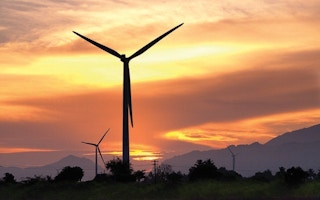Social acceptance and public mindset will ultimately decide whether or not clean energy is able to displace fossil fuels as a global norm, said experts on the second day of Clean Energy Expo Asia.
“It’s not just about renewable energy supply, it’s about the way we design our cities and use energy,” said Peter du Pont, vice president of clean energy in Asia for energy solutions provider Nexant Inc.
Comparing the energy usage per head in Japan and the United States, which have similar GDP per capita, he singled out wastefulness as a key reason for the ongoing dependence on fossil fuels. The US uses nearly twice as much energy per person as Japan, even after accounting for greater travel distances.
With global energy consumption predicted to take a 53 per cent jump by 2035, and 38 per cent of it estimated to derive from developing Asia by 2030, the pressing question, noted panellists on the day’s first plenary session, is how to change mindsets and get as many people as possible to accept renewable energy as a viable alternative.
This is not to say that renewable energy is not already widely accepted. “Look at what we have today and you’ll see that clean energy is becoming mainstream,” said Jannik Termasen, vice president of government relations for wind energy firm Vestas Asia Pacific.
Speaking at a plenary session on how the demand for clean energy could affect its development, he said that there is a need to emphasise its mainstream quality and the existence of current solutions, rather than continuing to treat it as something special.
“We install a turbine every three hours worldwide, so why are we always talking about the future and not about solutions that exist today?” he asked.
The issue is not just about acceptance at policy and implementation levels, noted delegate Kathleen Robbins, principal of California firm KRobbins & Associates. Pointing out that her home state is the exception to the climate scepticism pervading the US, she said that the Californian state government had taken action under pressure from the electorate, and that its measures had subsequently been very successful. “Social acceptance is the key to going forward,” she said.
Agreeing, Mr Termasen said, “It is a shared responsibility between industry and government - the government needs to inform people about the importance of the true benefits of pursuing this path.”
This is especially the case in the Asia-Pacific region, he said, where the implementation of renewable energy and energy efficiency has faced a backlash because the population feared higher costs.
“(A renewable energy project) gets lots of resistance if there is no participation from the population,” explained Professor Christophe Menke of the University of Applied Sciences Trier, Germany. “(We need to) get the people into a position where they can participate, whether it is in efficiency, renewables or even smarter transport options.”
Professor Menke, who had earlier compared global dependence on fossil fuels to heroin addiction – drawing an amused reaction from audience members and fellow panellists – also noted that people are not comfortable with the idea that energy security is a thing of the past.
Because of that, he said, energy security will have to be the main driver for getting the Asia Pacific region to consider renewable energy.
Citing the situation in Thailand, where the Electricity Generating Authority of Thailand is channelling funds into the development of energy efficiency rather than increasing its purchases of oil and gas, he said that governments are much more likely to act if they become afraid of depending too heavily on fossil fuels.
Panellist Susan Gladwin, director of sustainability for Autodesk, suggested that part of the solution should be to consider systems from a design perspective. “We need to understand what the best practices in efficiency and construction are,” she said. “Manufacturing has a role to play here in shifting to different materials and methods.”
Nexant’s Mr du Pont said that another thing that needs to be done is the creation of a secretariat in the Asia Pacific that can compile key indicators, such as government policies and national energy efficiency targets. These figures, he pointed out, are needed as a scorecard to measure how far a country has progressed as compared to where it should be.
In terms of policies, added Professor Menke, sustaining and monitoring them over the long term is crucial. “Don’t have a stop-and-go policy,” he said. “That will kill businesses; it will discourage young people from going into the sector. Keep the policy and monitor it over the long term. If you didn’t get what you want, adjust it,” he added.
The last word came from Vestas’ Mr Termasen, however, as he aimed a mild barb at the entire concept of renewable energy as a separate source of policy and discussion. “Why call it ‘renewable’?” he asked. “Just call it ‘energy’ and integrate it into regular energy conferences.”
Eco-Business.com’s coverage of Clean Energy Expo Asia 2011, part of Singapore International Energy Week 2011, is brought to you by Schneider Electric.






















